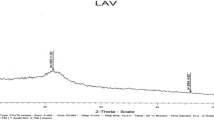Abstract
Purpose
Wastes generated from industrial processing of tomato, lemon, carrot and fennel were used as sole carbon sources to support cheap microbial biomass production of thermophilic and halophilic microbial strains. The production of enzymes and biopolymers was also investigated.
Methods
The wastes were tested as growth media for extremophiles in two different modes: batch fermentation (BF) and dialysis fermentation (DF). Enzyme assays and NMR analysis of biopolymers were also performed.
Results
All the wastes afforded microbial biomass production yields comparable to those achieved using the standard complex media (CM). DF conditions allowed quantitative microbial biomass recovery and were used to study biomolecules production. Fennel and lemon wastes could provide appreciable enzyme production yields; carrot residues supported PHB production in comparable amounts with respect to the relative CM.
Conclusion
Vegetable wastes can be used as growth media for extremophile biomass fermentation thus providing a cheaper way to produce biotechnological extremozymes or biopolymers using zero cost feedstocks. Their use as fermentation media could also represent an alternative and low environmentally impacting method for vegetable wastes management.


Similar content being viewed by others
References
Mahro, B., Timm, M.: Potential of biowaste from the food industry as a biomass resource. Eng. Life Sci. 7, 457–468 (2007)
Arvanitoyannis, I.S., Varzakas, T.H.: Vegetable waste treatment: comparison and critical presentation of methodologies. Crit. Rev. Food Sci. Nutr. 48, 205–247 (2008)
Mehta, V.J., Thumar, J.T., Singh, S.P.: Production of alkaline protease from an alkaliphilic actinomycete. Biores. Technol. 97, 1650–1654 (2006)
Ikram-ul-Haq, Ashraf, H., Iqbal, J., Qadeer M.A.: Production of alpha amylase by Bacillus licheniformis using an economical medium. Biores. Technol. 87, 57–61 (2003)
Ali, R., Zaidi, H.Z.: Utilisation of waste vegetables and fruits for production of fungal mass. Agr. Wastes 12, 251–260 (1985)
Rezazadeh Bari, M., Alizadeh, M., Farbeh, F.: Optimizing endopectinase production from date pomace by Aspergillus niger PC5 using response surface methodology. Food Bioprod. Process 88, 67–72 (2010)
De Stefano, D., Tommonaro, G., Simeon, V., Poli, A., Nicolaus, B., Carnuccio, R.: A polysaccharide from tomato (Lycopersicon esculentum) peels affects NF-KB activation in LPS-stimulated J774 macrophages. J. Nat. Prod. 70, 1636–1639 (2007)
Tommonaro, G., Poli, A., De Rosa, S., Nicolaus, B.: Tomato derived polysaccharides for biotechnological application: chemical and biological approaches. Molecules 13, 1384–1398 (2008)
Romano, I., Lama, L., Schiano Moriello, V., Poli, A., Gambacorta, A., Nicolaus, B.: Isolation of a new thermohalophilic Thermus thermophilus strain from hot spring, able to grow on a renewable source of polysaccharide. Biotechnol. Lett. 26, 45–49 (2004)
Nicolaus, B., Schiano Moriello, V., Lama, L., Poli, A., Gambacorta, A.: Polysaccharides from extremophilic microorganisms. Orig. Life Evol. Biosph. 34(1–2), 159–169 (2004)
Romano, I., Poli, A., Finore, I., Huertas, F.J., Gambacorta, A., Pelliccione, S., Nicolaus, G., Lama, L., Nicolaus, B.: Haloterrigena hispanica sp. nov., an extremely halophilic archaeon from Fuente de Piedra, southern Spain. IJSEM 57, 1499–1503 (2007)
Romano, I., Finore, I., Nicolaus, G., Huertas, F.J., Lama, L., Nicolaus, B., Poli, A.: Halobacillus alkaliphilus sp. nov., a halophilic bacterium isolated from salt lake in Fuente de Piedra, southern Spain. IJSEM 58, 886–890 (2008)
Romano, I., Poli, A., Lama, L., Gambacorta, A., Nicolaus, B.: Geobacillus thermoleovorans subsp. stromboliensis subsp. nov., isolated from the geothermal volcanic environment. J. Gen. Appl. Microbiol. 51, 183–189 (2005)
Romano, I., Nicolaus, B., Lama, L., Trincone, A., Gambacorta, A.: Gelrite plate technique for culturing Sulfolobus solfataricus, a thermoacidophilic archaebacterium. Biotechnol. Tech. 5, 29–30 (1991)
Strazzullo, G., Schiano Moriello, V., Poli, A., Immirzi, B., Amazio, P., Nicolaus, B.: Solid wastes of tomato-processing industry (Lycopersicon esculentum “Hybride Rome”) as renewable sources of polysaccharides. J. Food Technol. 1, 102–105 (2003)
Dubois, M., Gilles, K.A., Hamilton, J.K., Rebers, P.A., Smith, F.: Colorimetric methods for determination of sugars and related substances. Anal. Chem. 28, 350–356 (1956)
Miller, G.L.: Use of dinitrosalicylic acid reagent for determination of reducing sugars. Anal. Chem. 31, 426–428 (1959)
Singleton, V.L., Rossi Jr., J.A.: Colorimetry of total phenolics with phosphomolybdic-phosphotungstic acid reagents. Am. J. Enol. Vitic. 16, 144–158 (1965)
Motta, A., Romano, I., Gambacorta, A.: Rapid and sensitive method for osmolyte determination. J. Microbiol. Methods 58, 289–294 (2004)
Lama, L., Nicolaus, B., Trincone, A., Morzillo, P., Calandrelli, V., Gambacorta, A.: Thermostable amylolytic activity from Sulfolobus solfataricus. Biotech. Forum Europe 8, 201–203 (1991)
Kimura, H., Oshura, T., Takeishi, M., Nagamura, S., Doi, Y.: Effective microbial production of poly(4- hydroxybutyrate) homopolymer by Ralstonia eutropha H16. Polym. Int. 48, 1073–1079 (1999)
Nakamura, S., Doi, Y., Scandola, M.: Microbial synthesis and characterization of poly(3-hydroxybutyrate-co-4-hydroxybutyrate). Macromolecules 25(17), 4237–4241 (1992)
Giampietro, M., Ulgiati, S.: Integrated assessment of large scale biofuel production. CRC Crit. Rev. Plant Sci. 24, 365–384 (2005)
Gray, K., Zhao, L., Emptage, M.: Bioethanol. Curr. Opin. Chem. Biol. 10, 141–146 (2006)
Acknowledgments
This work was supported by Italian Ministry of Foreign Affairs (MAE, Directorate General for Cultural Promotion and Co-operation) and Ministero dell’Istruzione, dell’Università e della Ricerca (MIUR).
Author information
Authors and Affiliations
Corresponding author
Rights and permissions
About this article
Cite this article
Di Donato, P., Fiorentino, G., Anzelmo, G. et al. Re-Use of Vegetable Wastes as Cheap Substrates for Extremophile Biomass Production. Waste Biomass Valor 2, 103–111 (2011). https://doi.org/10.1007/s12649-011-9062-x
Received:
Accepted:
Published:
Issue Date:
DOI: https://doi.org/10.1007/s12649-011-9062-x




